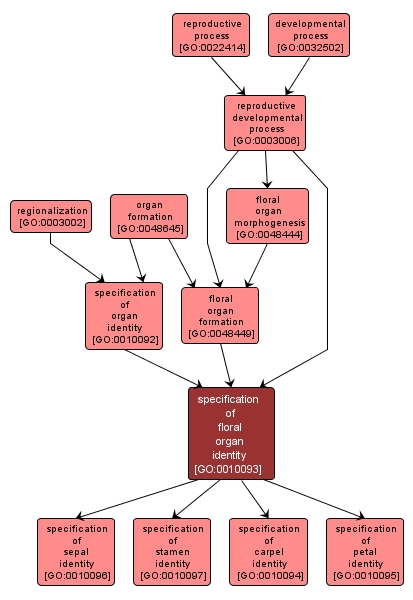GO TERM SUMMARY
|
| Name: |
specification of floral organ identity |
| Acc: |
GO:0010093 |
| Aspect: |
Biological Process |
| Desc: |
The process by which the identity of a floral organ primordium is specified. Identity is considered to be the aggregate of characteristics by which a structure is recognized. |
|

|
INTERACTIVE GO GRAPH
|














